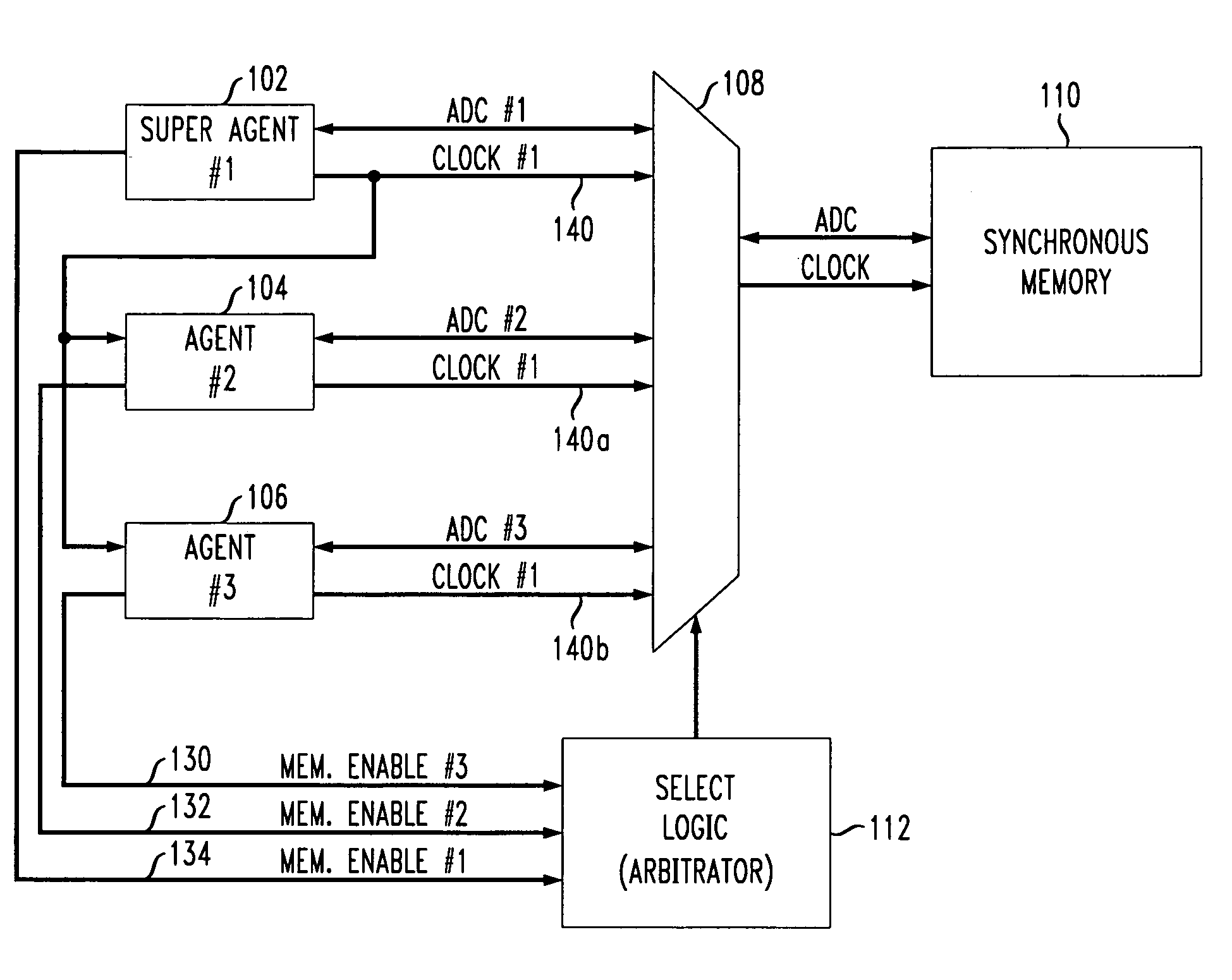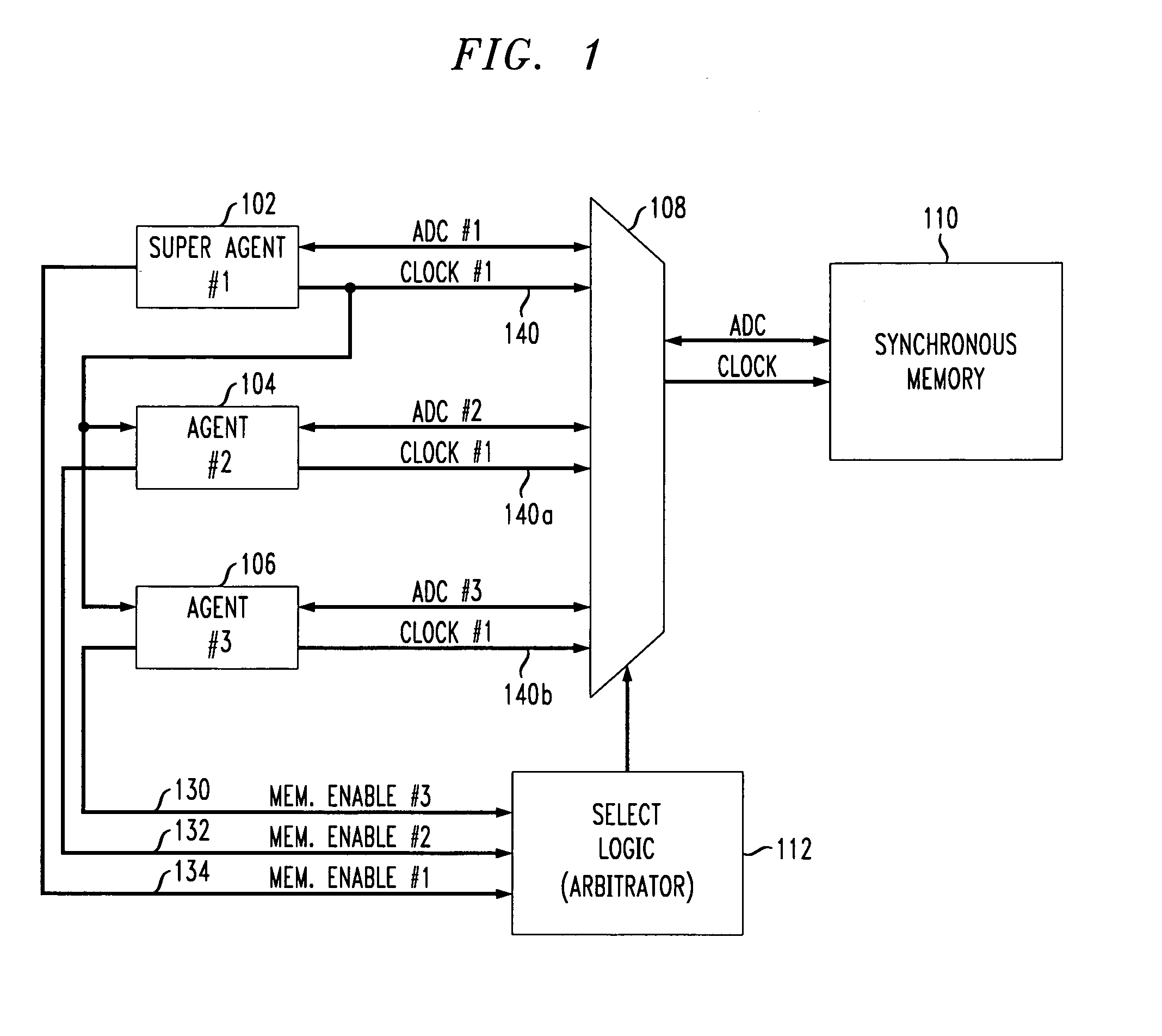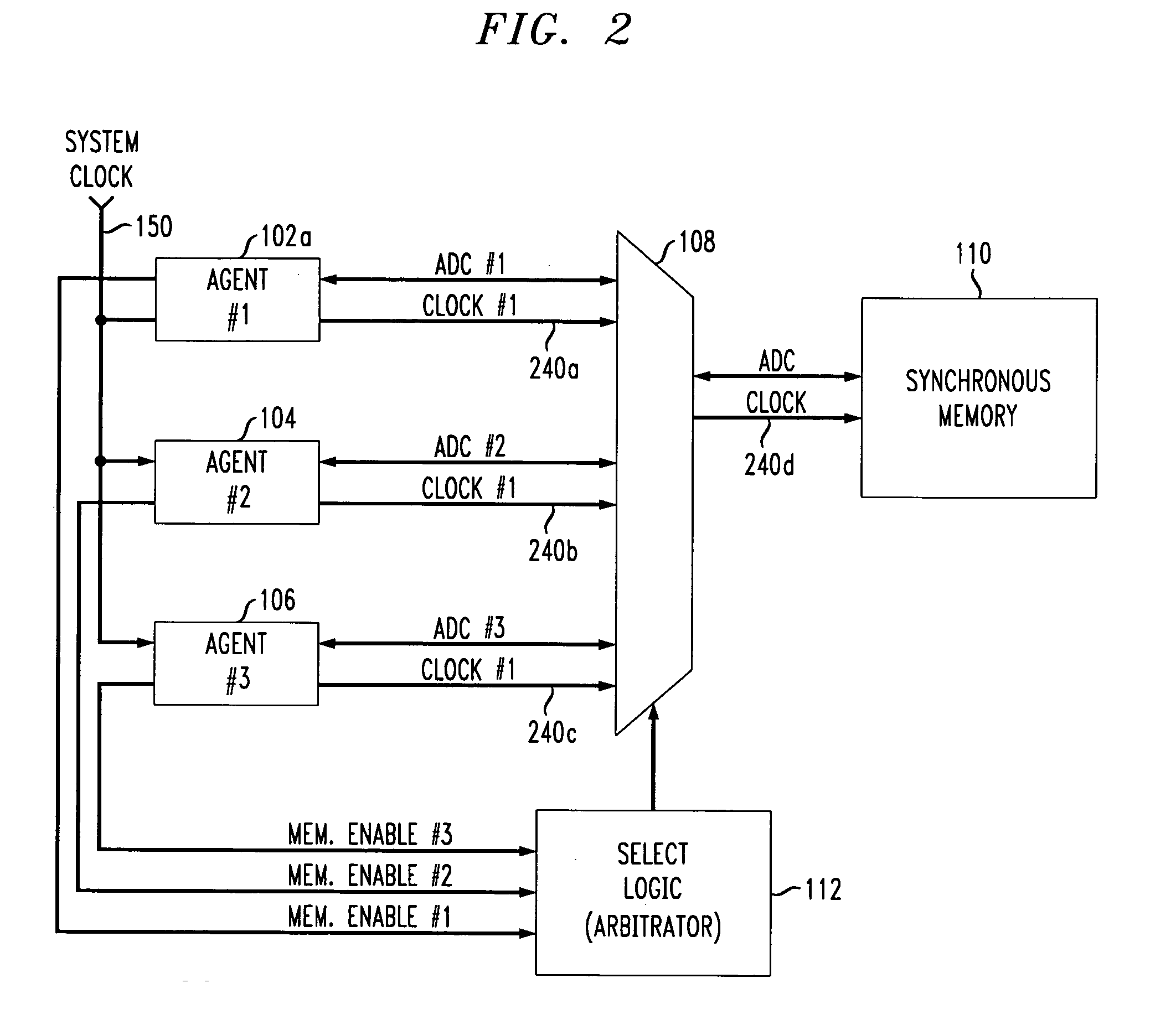Dynamic partitioning of memory banks among multiple agents
a technology of memory bank and agent, applied in the direction of memory address/allocation/relocation, instruments, computing, etc., can solve the problems of reducing the overall speed of accesses, limiting the design of conventional systems using synchronous memory, and clock signals from separate agents not being conventionally synchronous or in phase with one another
- Summary
- Abstract
- Description
- Claims
- Application Information
AI Technical Summary
Problems solved by technology
Method used
Image
Examples
first embodiment
[0033]FIG. 1 shows a first aspect of the present invention wherein a multiple agent system has one or more agents which utilize a clock signal from a super agent to synchronize clock signal access timing to the shared synchronous memory.
[0034]In particular, a synchronous memory block 110 is accessed by a plurality of agents 102–106 as shown in FIG. 1. Although three agents 102–106 are shown in FIG. 1, the present invention relates to multiple agent systems having any number of agents accessing shared memory.
[0035]An appropriately sized multiplexer (MUX) 108 forms a switch which allows any one of the multiple agents 102–106 to access the shared synchronous memory 110. The relevant busses for each agent 102–106 include the address, data and control (ADC) busses and a clock signal.
[0036]The MUX 108 is controlled by selecting logic, i.e., an arbitrator 112. The arbitrator 112 is provided with respective memory request signals 130–134 from each of the accessing agents 102–106, and based ...
second embodiment
[0042]FIG. 2 shows the first aspect of the present invention wherein all agents 102a, 104 and 106 are non-super agents using a shared system clock signal 150 to synchronize clock signal access timing to the shared synchronous memory 110.
[0043]In particular, the shared synchronous memory 110 may be conventional and is as described and shown with respect to the embodiment of FIG. 1. Moreover, the MUX 108, arbitrator 112 and non-super agents 104, 106 are as described and shown with respect to FIG. 1. In this embodiment, however, the super-agent 102 shown in FIG. 1 is replaced with a non-super agent 102a.
[0044]All three agents 102–106 receive a system level clock signal 150 to which respective address, data and control busses as well as respective memory access clock signals 240a–240c are synchronized. Thus, the clock signal 240d provided to the shared synchronous memory 110 is synchronized, e.g., has the same frequency, duty cycle and / or phase with respect to the clock signals 240a, 2...
PUM
 Login to View More
Login to View More Abstract
Description
Claims
Application Information
 Login to View More
Login to View More - R&D
- Intellectual Property
- Life Sciences
- Materials
- Tech Scout
- Unparalleled Data Quality
- Higher Quality Content
- 60% Fewer Hallucinations
Browse by: Latest US Patents, China's latest patents, Technical Efficacy Thesaurus, Application Domain, Technology Topic, Popular Technical Reports.
© 2025 PatSnap. All rights reserved.Legal|Privacy policy|Modern Slavery Act Transparency Statement|Sitemap|About US| Contact US: help@patsnap.com



